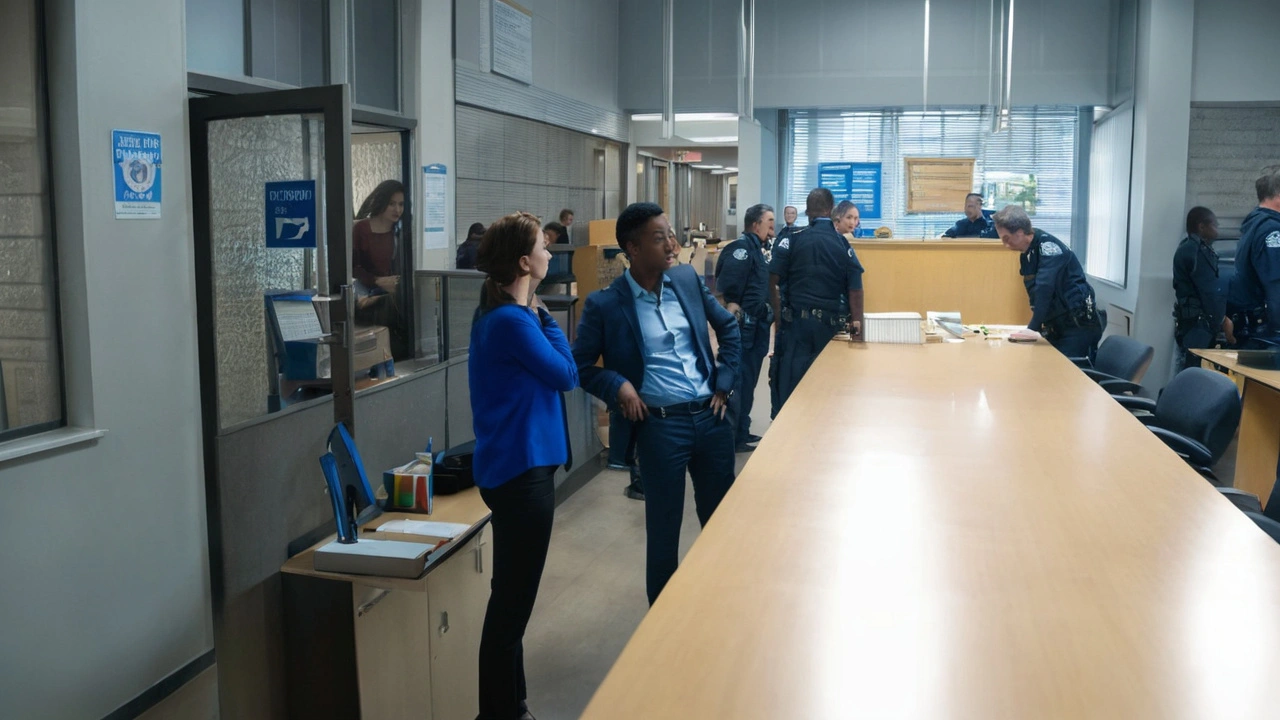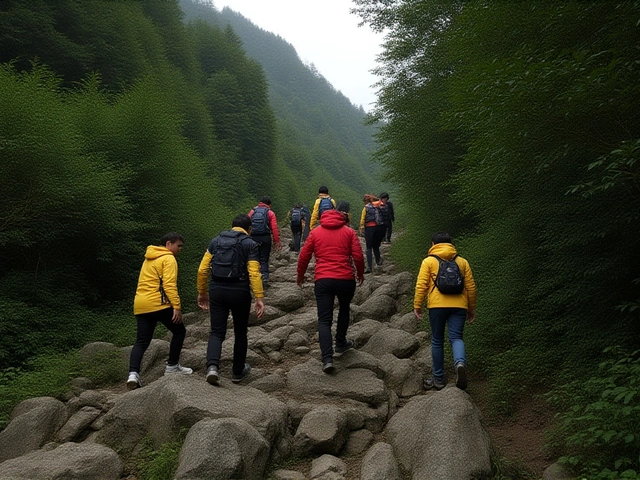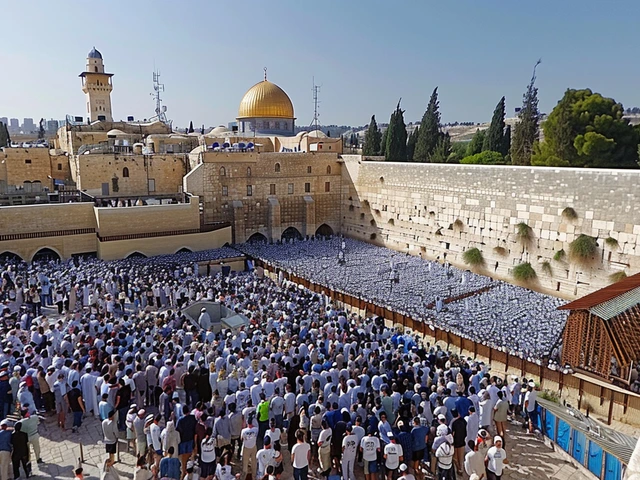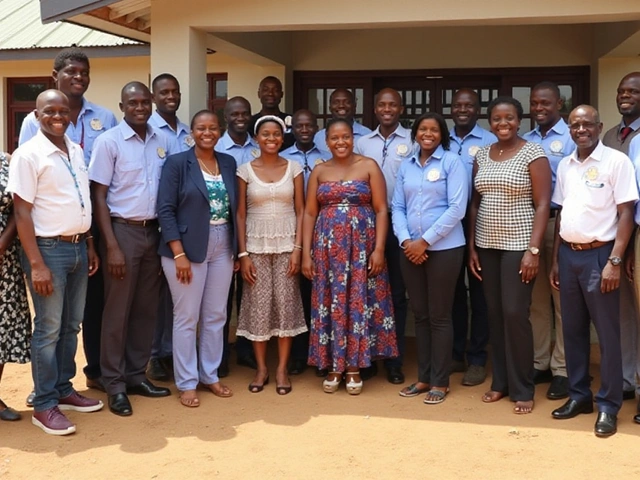Introduction
A shockwave has rippled across South Africa as footage of the controversial pastor, Prophet Paseka 'Mboro' Motsoeneng, engaging in a violent altercation at a school surfaced online. The video, which went viral on social media, depicts Mboro brandishing pangas—large knives typically used for agricultural purposes—and issuing threats to school staff. This alarming behavior not only led to his arrest but also ignited a public outcry for accountability from both religious and educational figures.
The Incident and Its Aftermath
Eyewitness accounts and video evidence detail a chaotic scene where Mboro, a figure already steeped in controversy, was seen storming into a school premises with weapons in hand. His aggressive demeanor and threats directed towards teachers have spurred immediate and varied reactions from the public. While some were unsurprised, given Mboro's contentious history, the intensity of this incident has still managed to astonish many. The video showcases a terrifying environment, with students and staff appearing visibly distressed and scrambling for safety.
Background of Prophet Paseka 'Mboro' Motsoeneng
Prophet Paseka 'Mboro' Motsoeneng has never been a stranger to controversy. Known for his flamboyant and sometimes scandalous religious practices, he has managed to garner a significant following while simultaneously attracting criticism. His church services, often filled with dramatic exorcisms and miraculous claims, have been subjects of both fascination and skepticism. This latest incident only adds to a long list of contentious episodes surrounding the pastor.
Public Reaction and Calls for Accountability
The footage of this incident has led to an outpouring of concern from the public. Many are questioning how someone in Mboro's position was allowed to carry out such an act without immediate intervention. Social media platforms have been flooded with calls for stringent measures against him, not only from a legal standpoint but also from religious oversight bodies. The role of religious leaders in society is being scrutinized closer than ever before.
Impact on the Community
This incident has undeniably left a mark on the local community. Parents are worried about the safety of their children, and teachers are left wondering about the adequacy of security measures in place. Schools, ideally safe havens for learning, have been painted in a vulnerable light due to this violent episode. Conversations about upgrading school security and implementing stricter visitor protocols are now at the forefront.
Legal Proceedings and Potential Consequences
Mboro's arrest marks the beginning of what could be a lengthy legal process. Authorities have charged him with multiple offenses, including assault and possession of dangerous weapons on school property. Legal experts suggest that, given the severity and public nature of his actions, he might face hefty penalties if convicted. There is also a burgeoning discussion about holding religious institutions accountable when their leaders engage in criminal behaviors.
Responsibilities of Religious Figures
Religious leaders hold a unique and influential position within the community. Their actions, whether positive or negative, significantly impact public perception and trust in religious institutions. Incidents like these bring into question the role of oversight bodies in monitoring and regulating the conduct of such figures. It also emphasizes the need for checks and balances to ensure that those in power do not abuse their position.
Voices from the Religious Community
Other religious leaders have begun to speak out about the incident, distancing themselves from Mboro's behavior. They emphasize that his actions do not reflect the principles of their faith or the conduct expected of someone in his position. This incident has initiated a broader conversation about the responsibilities and ethical standards that should govern religious leaders.
The Role of Social Media in Accountability
The rapid spread of the incident's footage on social media platforms like Twitter, Facebook, and Instagram played a crucial role in drawing attention to the event. It underscores the power of digital media in holding individuals accountable. Within hours, the video had garnered thousands of views, shares, and comments, putting pressure on authorities to take swift action. This illustrates how social media can be a double-edged sword—while it can spread information rapidly, it also demands quick response times from those in power.
Looking Ahead
As the dust begins to settle, the focus now shifts to the steps that need to be taken to prevent such incidents in the future. This includes bolstering security measures in schools, implementing stricter regulations for visits from outsiders, and reevaluating the oversight mechanisms for religious figures. It also reminds us of the importance of community vigilance and the power of social media in bringing crucial issues to light.
The case of Prophet Paseka 'Mboro' Motsoeneng serves as a stark reminder of the volatility that can arise when influential figures act irresponsibly. It is a call to action for tighter controls and greater accountability, not just within religious institutions but across all sectors of society.










17 Comments
It is essential to keep calm and guide the community towards constructive dialogue while respecting the boundaries of law and faith. A supportive approach can help de‑escalate tension and foster mutual understanding.
Wow, that video blew up fast! 😮 It shows how social media can turn a local drama into a national conversation. People need to stay informed but also keep perspective.
Oh, brilliant, another “prophet” decides to bring kitchen knives to a school. As if we needed more drama in the headlines. The only thing missing is a soundtrack of violins playing in the background.
This guy’s antics are pure madness.
When you examine the tapestry of religious authority, you quickly realize that the threads are often tangled with hubris. Mboro’s latest stunt is not an isolated incident but a symptom of a deeper malaise. The willingness to brandish a pangas in an educational setting demonstrates a startling contempt for societal norms. It also reveals a dangerous conflation of spiritual leadership with raw intimidation. Historically, charismatic figures have leveraged fear to cement their following, and this episode fits that pattern. The audience, both local and global, must ask whether faith should be weaponized in such a literal sense. Legal frameworks exist for a reason, and ignoring them erodes the rule of law. Moreover, schools are meant to be sanctuaries of learning, not stages for theatrical aggression. When a pastor steps onto that stage with knives, he not only jeopardizes safety but also tarnishes the reputation of all sincere clergy. The community’s outrage is justified, and it must be channeled into constructive reform. Oversight bodies need clearer mandates to intervene before such theatrics become commonplace. Transparency from religious institutions can restore trust that has been corroded by repeated scandals. Psychologically, the lure of power can corrupt even those who claim divine inspiration. Hence, it is incumbent upon believers to critique their leaders when they stray into the realm of violence. Only through vigilant accountability can we hope to prevent future incidents that threaten both moral and physical safety. In sum, the episode serves as a stark reminder that charisma without conscience is a recipe for chaos.
The whole spectacle reads like a badly scripted reality show, yet it is disturbingly real. Such reckless theatrics betray a profound moral bankruptcy and serve only to feed the ego of a self‑appointed messiah.
Imagine the echo of screams reverberating through those hallways, the palpable fear that clung to every corner. It is a scene straight out of a horror novel, yet it unfolded in daylight, under the guise of divine authority.
It might be helpful to consider how community support systems can be bolstered to protect schools from similar threats. Engaging local leaders in safety planning could provide a proactive layer of defense.
We need stricter visitor protocols in schools for safety
While many are quick to condemn, one could argue that the media sensationalism amplifies the incident beyond its actual impact on the community.
Unbelievable!!! This is a clear sign that the lines between spiritual leadership and criminal behavior are blurring!!!! Authorities must act swiftly!!!! Society cannot tolerate such brazen disregard for safety!!!!
Sure, bring knives to a school, that’s totally the way to win hearts.
Enough with the shouting! We must unite and demand real change, not just condemn from the sidelines. Action is what the community deserves.
In the face of such disturbing events, it is vital that we collectively champion stronger security measures and uphold the dignity of our educational institutions.
This incident also highlights the broader cultural tensions that arise when religious authority oversteps secular boundaries. It is a reminder that dialogue between faith communities and civic institutions must be continuously nurtured.
Let’s stay hopeful that reforms will follow this crisis! 😊 Unity and vigilance will guide us forward.
The incident underscores a failure of risk management protocols within educational infrastructure. From a systems engineering perspective, the breach indicates a gap in stakeholder alignment and threat modeling. Adaptive security frameworks could have anticipated anomalous visitor behavior through predictive analytics. Moreover, the absence of a robust access control matrix permitted unauthorized entry by a high‑profile individual. Interdisciplinary governance structures, involving both ecclesiastical bodies and civil authorities, are essential to mitigate such convergences. Policy recommendations should emphasize the integration of real‑time surveillance data streams with incident response teams. The sociocultural dimension also requires a nuanced approach to community engagement and narrative framing. By fostering a collaborative risk culture, schools can enhance resilience against both physical and psychological threats. Legal compliance must be complemented by proactive ethical standards that transcend statutory minima. Future research could explore the efficacy of behavioral cue detection algorithms in public spaces. Ultimately, the confluence of religious charisma and unchecked authority presents a complex challenge for regulatory bodies. A multi‑layered, interoperable safety architecture will be pivotal in safeguarding educational sanctuaries.